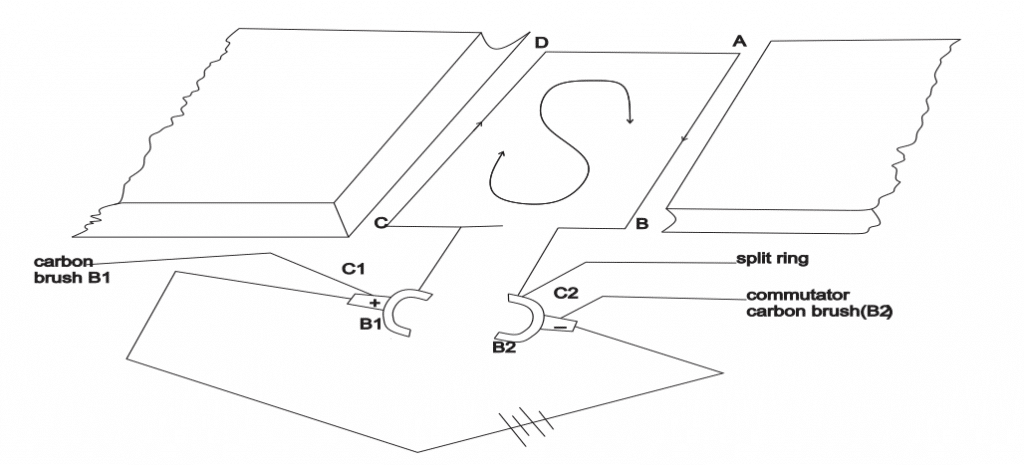- The electric motor – Electric motor is a device for converting electric energyEnergy is the ability to do work. Energy exists in several forms such as heat, kinetic or mechanical energy, light, potential energy, and electrical energy. Units of Energy: The SI unit... More into mechanical energy.
- A strong powerful magnet to produce a strong magnetic field (B) The magnets are designed such that they produce radial magnetic field so that a maximum force can be exerted on the coil or wire
- A rectangular coil of wire known as an armature which rotates about an axis. It is used to concentrate the magnetic field on the coil and gives the coil the necessary momentum to keep turning
- A split-ring commutator C1 and C2 to reverse the direction of current in the coil every cycle
- Two carbon brushesB1 and B2 which allows current to enter and leave the coils

When the coil is in horizontal position as shown,it is assumed that current flows through the coil from the battery in clockwise direction. At this point, an upward force acts on the arm AB of the coil and a downward force acts on CD.
The two equal and oppositely directed forces constitute a couple whose torque causes the coil to rotate in a clockwise direction. The split-ring to which the ends of the coil are attached rotate along with the coil and the momentum of the moving coil carries it beyond the vertical position, the two halves of the split ring commutator automatically change contact from one brush to another. Commutator C1 is now in contact with brush B2 and C2 in contact with B1. This reverses the direction of current flow in the coil and hence the direction of forces on the coil AB now experiences a downward force and CD an upward force.
The coil rotates through half a turn more where the current again reverses by means of the sliding brushes and the split-ring commutator. A repetition of this reversing process at each half turn gives rise to a continuous rotation of the coil as long as the current flows through it.
Power or efficiency of a d.c motor is increased if
- The armature has more loops of wire on a laminated soft iron drum
- A strong magnetic field is produced by electromagnets
- The current flowing through the coil is increased



Responses